#High-Resolution VR Gaming
Explore tagged Tumblr posts
Text
《Asgard’s Wrath 2》首次更新:引入Quest 3視覺增強功能
自《阿斯加德之怒2》發布以來的四天裡,Sanzaru和Oculus工作室的團隊對玩家的反饋表示震驚。他們熱切地希望每位玩家都能擁有最佳遊戲體驗,因此迫不及待地��享了《阿斯加德之怒2》的第一次更新資訊。這次更新將在本週推出,主要包括Quest 3的視覺增強功能。 團隊清楚地聽到了玩家的反饋,迅速開發了兩個Quest 3視覺增強的選項,這些選項是可選的。他們還有更多增強選項在計劃中,但需要時間來驗證其可行性,這些討論將在新年之後才會開始。為了不讓玩家在假期裡等待,團隊決定現在就推出這些增強功能: 90Hz切換選項 增強視覺效果——這將提高屏幕解析度和細節層次(LOD)的距離乘數 開發團隊知道有些玩家正在嘗試自行超頻這些設置,但他們提醒,長時間在CPU/GPU 5級運行不是官方支持的,可能會對電池壽命和設備整體性能產生意想不到的影響。這次更新中的切換選項是官方支持的Quest…

View On WordPress
#90Hz Gaming Experience#90Hz遊戲體驗#Advanced VR Settings#Asgard&039;s Wrath 2 Update#Enhanced LOD in VR#進階VR設置#阿斯加德之怒2更新#虛擬實境#虛擬實境遊戲#虛擬實境資訊#虛擬實境冒險遊戲#虛擬實境新聞#高解析度VR遊戲#High-Resolution VR Gaming#META#Oculus Studios Release#Oculus工作室新聞#Quest 3#Quest 3 Visual Enhancements#Sanzaru Games News#Sanzaru遊戲動態#Virtual Reality Adventure Games#vr#vr game#VR Gaming Enhancements#vr news#vr news today#VR細節層次增強#VR遊戲提升#任務3視覺增強
0 notes
Text
I've been doing some conceptual sketching over the last several weeks, chewing on the limited technology zones idea that I've been working on. (It's not just an excuse for fictional detectives.)
Rather than proposing a single solution, this post covers some of that thinking, to provide you with concepts to chew on.
The Medieval1900/1960s/1990s/2010s/+ tech zone poll was based on a general sense regarding the speed of movement and the speed of information, and noticing that in the year 2000, "the Internet" was still a place you went to (by sitting down at your computer), and not a cyberspace layer that surrounds the planet.
But what, exactly, would "1990s/Y2K computer limits" cash out to? 800x600 pixel resolutions? 800MHz processors?
Just what was this mysterious "it factor" we would be trying to bring back by making computers slower and less advanced?
From my notes:
One way to view virtual reality is that the VR environment has extremely low weight, and is therefore extremely mutable. Any physical good, such as a sports car, can be simulated, and in almost any number, which raises a question: why buy a real sports car when we can simulate them? People are at risk of getting lost in virtual reality, with simulations becoming more satisfying to them than real life, leading them to underinvest in their real life. We can think of technology as altering the ratio of effort to environment change. High effort is required to move dirt with a shovel. Low effort is required to move the same volume of dirt with a bulldozer.
The assumption behind the zones-by-tech-level question is that beyond a certain point, except for medical technology, additional high-tech development is superfluous, because virtual reality means that nearly arbitrary sensory experiences can be generated relative to an agent's sense limits.
Demand results when the expected value of a change in the environment loops back through the agent, resulting in a potential change in behavior.
The point of video games is to produce a high stimulus feedback relative to the amount of effort. (I read that in an article on GamaSutra once years ago, and it really stuck.)
In a virtual reality environment, reward signals can become disconnected from agent well-being.
Movies, television, and books appear to be less addictive than video games and social media. What separates them? Interactivity appears to be the primary difference.
With this in mind, I was then able to work backwards and develop an intermediate regulatory concept: interaction frames.
With a book, the content is static the entire time. With a DVD, you press a button and then the DVD may play to completion. You might skip back to a previous scene, but there is no need for further interaction.
A paged website is static until you update the page. With continuous-scroll social media, new content is always being added, and at any moment you may receive a notification to get into an argument or that someone liked your post. Video games in general tend to have continuous interaction.
This model does not adequately address the situation, and, importantly, cannot distinguish between a video game and a spreadsheet program like Microsoft Excel.
We can adapt a concept from gambling: human beings seek mastery or identification of patterns, and the randomness of gambling prevents mastery of the pattern from being achieved. A spreadsheet is very much not random, while loot drops in many video games are quite random!
We could at least measure commands to produce random numbers, or require registration of pseudorandom number generators.
However, this is still insufficiently general. Simulator games may generate complex behavior from simple rules. Are we stuck regulating "game-like elements" by committee? That doesn't sound right.
Still, people do get bored of single-player games, either by mastering the gameplay, or when they get used to the story elements of the game. A visual novel is more like a spreadsheet or a book than like a slot machine.
Also, not all social media seems to be equally addictive. Why were chatrooms seemingly less dangerous than twitter?
There is an anticipation of information gain (informative tweets). There is an anticipation of exciting experiences (someone shows up to fight!). Also, from the user's perspective, it's somewhat random.
In a chatroom, there are fewer people, and they stay for longer. This means that (1) you have more information about them and their positions, (2) you have more incentive to be cordial, and (3) because there is a limit to how much they can have gotten up to while you weren't looking, there is a limit on the anticipated amount of new social information.
On Twitter, there is an endless stream of new people to argue with, and they can show up at any time. You can post about some chalupas you made yesterday, and some lunatic will show up to fight you. Thus, there is always the background anticipation of an (emotionally stimulating) attack.
In a chatroom, if someone would attack you over chalupas, you already know him as the chalupa guy. In real life, an argument is limited by space and time - the chalupa argument ends by default when the bar closes and the chalupa guy is no longer within earshot, and you cannot reopen it until you see him again.
Tumblr is slower-paced, but things like "likes" are continuous, so there is always the incentive to check in to see how your post is doing.
This allows us to get into a model based on food.
There is a dieting strategy involving not buying junk food at the store, so that it is not at your house when you get a craving for it.
This implies that the craving is a temporary impulse or peak, and that it just has to be outlasted. If the craving were uniform, the strategy wouldn't work, because the dieter would just buy the junk food at the store.
(This suggests that the baseline craving for drugs is higher, because drug addicts are willing to take much more extreme actions to feed their addictions, over a longer time period, and that the symptoms for withdrawal (a more constant negative stimulus) are worse.)
So is control in the hands of the agent, or is it in the environment? Is there choice, or not? The dieting strategy appears to split the difference - removing junk food from the cupboard is a kind of prosthetic self-control and willpower shifting. Willpower exists and can be exercised, but is limited, and reserves vary over time. Altering the environment at a point of high willpower can reduce willpower requirements in later contexts, until they are within the window of reliable feasibility.
This suggests a strategy of altering the digital environment to enable users to act on meta-preferences for prosthetic self-control.
For social media services, this suggests regulations imposing new usage modes. For example, it might be required to provide access to third-party user interfaces, which might do things like hide the number of likes. Alternatively, a user might receive all the tweets from a specific set of accounts as a daily summary. Since social media companies require revenue, this access might be a paid service based on average foregone ad revenue. It's a matter that would require a good deal more consideration.
For other items, as part of a broader social movement, we might imagine users being able to buy dedicated hardware. Attempting to control interactivity via software requires a great deal more regulation and is easier to bypass. By contrast, we might imagine a hardware module that writes to a virtual canvas at some rate. The user could then scroll the canvas without receiving updates until the next refresh.
The user could buy an appliance device with built-in limits, similar to not bringing junk food home from the store.
Regarding welfare...
If social media makes people insane, then refraining from social media is pro-social, but suffers from a coordination problem.
However, that's more speculative. More broadly, this is about the liberal concern of consent under capitalism, and what it means to consent to technology. There are two considerations, in tension.
If you have to either use a technology or be homeless, then can you really have been said to have "consented" to the technology?
On the other hand, why should everyone else be expected to subsidize some guy using a horse and buggy?
Maximization of pattern efficiency is likely to be hostile to the continued existence of the human species, not that differently from how hard drugs distort and kill people. On the other hand, insufficient pattern efficiency means reduced production, which may mean making hard moral choices and having wasteful suffering that could have been avoided.
(Regulated capitalism is actually pretty good about consent relative to production levels, compared to say, feudalism or command economies.)
The conventional liberal response is a universal basic income - this neatly ties up many questions of consent by removing the greatest point of leverage - but this is problematic, as it involves redistributing labor to able people who may not be working at all. I've been working on an alternative based on "universal basic land," but I'm not satisfied with it yet. The essential idea is that land and materials are scarce, while labor (directed effort) and capital (configurations of materials) are variable. If life support (sunshine, air, food, water) is guaranteed, then trade is a net benefit (rather than resulting in potential gradual loss of life support due to lack of leverage).
#writing_tag#worldbuilding#mitigated future#flagpost#the invisible fist#digital limits considerations
8 notes
·
View notes
Text
In response to this post:
I think it's because it has the best story progression and build up.
Everyone appreciates a story with rising action, climax, and resolution. You need the "lows" in order for the "highs" to stand out, and vice versa. A small problem some other chapters had was the use of too much "high", tense moments, which results in feeling like the player was just thrown into the climax of a story.
One thing Xkour also does with its "low"s is set up a growing sense of unease, teasing the player with mystery.
Xkour starts with a friendly tutorial into the game, the player feels welcomed as no imminent threat is found. However, that changes as the tutorial goes slightly haywire and with the newly learnt fact that dying actually has consequences. This unease steadily grows until the third quest where it reaches its peak. So, what does the summoner do? Flee this "peace" and "fun" to find out the dangerous truth behind it all. One exposition later, and we've reached the first climax and subsequent resolution. Beautiful.
But of course, the story isn't done. After the first resolution, we get another moment of "low"s getting "higher" as the guardian trials start, but similarly with that unease that something is wrong back at main and even here. This time, instead of reaching its peak when the exposition drops, the story suddenly goes into a relative "low" with the reveal that the threat, the creator, wasn't here all along. But of course, it almost immediately shifts back into a "high" once another similar truth is revealed. So then we have the big climax of the whole two chapters, and then the story somewhat manages with its resolution.
Another thing would be the story's relatability.
What I mean is that players can easily connect with the characters that appear since everyone is a player here. (Also, who doesn't like the idea of a VR parkour game?) So this connection makes the stakes hit harder.
The ultimate threat of this chapter is the imprisonment and brainwashing of the players. And I assume it's easier to understand the dread of being trapped forever as opposed to other fantastical threats.
The story also uses Cyto as a way to personalise the danger of being potentially stuck in a game forever. Something about feeling more for one person's story rather than a general populace's. Although that may be the case, the story kind of fails to deliver on his anguish and thus people, us, are going to rewrite that sh** because it's too good to give up on.
(Luna's emotional anguish with herself as a program rather than a real being was also a treat.)
Another neat thing about Xkour is that it's the only chapter to have a clear connection to Luni that isn't about the swords of corruption.
There are a plethora of other minor things about this story that compile up to make this my favourite two chapters in Gacha World, some of which may differ from individuals.
tldr:
The Xkour storyline applies story writing 101 (the hill) well enough and is quite relatable, allowing the player to easily get invested into the story.
Cyto is an underrated character with almost as much emotional baggage as DJ X, and that's something this small community likes to see.
(I say that with a straight face as I continue typing out my currently 2600 word count analysis on Vale in canon and her despair with being trapped under C!Kilios' rule.)
Goodness, I love Xkour.
#gacha world#xkour#xkour skylines#gw cyto#{(You mention Xkour I'll come running to get to you.)}#{(That's what that smiley face was for OP.)}#{(I know it was a semi joke but duck it why not post a short analysis on main?)}
22 notes
·
View notes
Text
Looking forward to InZoi "Not looking forward to the PC Requirements"

I'm don't like playing my games at low resolution so I'm going to skip right by the Low Resolution requirements.
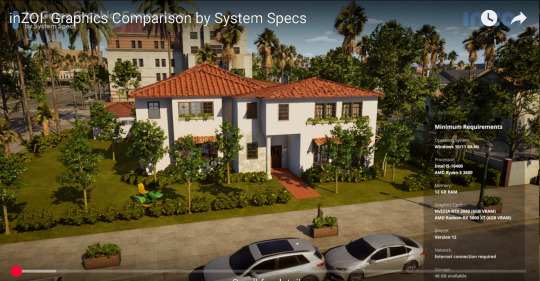
There's some funky thing going on with the roof-tiles so I'm not going to bother trying to play this on a i5-10400 or a Ryzen 5 3600. Right now, I'm debating on whether to go full on into high-graphics or try to live with the game at medium or go up to recommended graphics hardware or just say f-it and blow my money and get the top of the line computer system to be able to knock the socks off myself and play InZoi at full 4K quality.
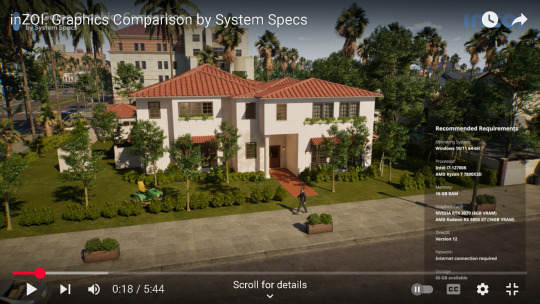
Recommended specs are clearly at either an i7-12700K or a Ryzen 7 7800 X3D
or should I just blow my budget for the next three years and go whole hog and get myself the i7-14700K or Ryzen 7 9800 X3D.
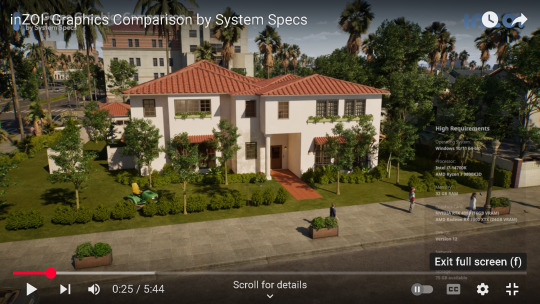
Each one of these CPUs is a hefty purchase cost at the moment. I would really want to get the Ryzen 7 9800 X3D but unfortunately in Canada, that's a hefty


The graphics card itself is either a RTX 4080 or an ATI Radeon 7900 XTX and I'm leaning towards the 7900 XTX.
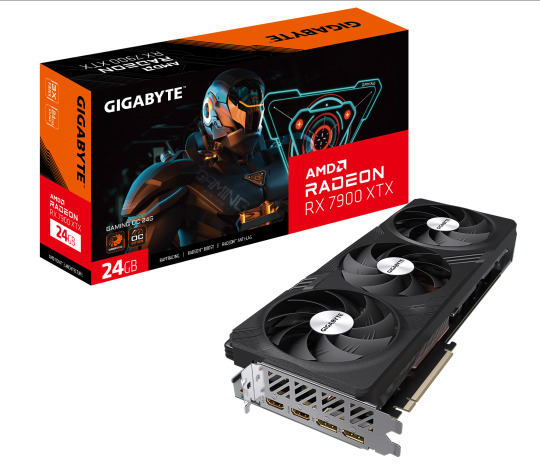

That already puts my "hoped for" system close to $2,100.00CDN and I haven't even started to look at the components that will put that all together (motherboard and all the other things (CPU Cooler fans, case...etc...etc...). This is where my head starts spinning and my wallet starts screaming in terror. But hey...not only am I looking at InZoi. I intend to play these other games as well.

Cities Skylines II requires a computer with a pretty high graphics card.

MSFS 2024 also requires a graphics card that can handle ray-tracing so. The other two games require less expensive graphics cards, but the 7900 XTX will probably bring out the graphics a bit more in these older games.

These last two games probably give you the indication (which is correct) that I'm a guy. Yep, my first love was flight simulators. And of course I'm looking at a military FPS.

...which turns photo-realistic when you pair it with a 7900 XTX I wish it would do the same for Sims 3, however. ~smirk~ and SWTOR. It's not going to be soon since saving up the $$$$ is going to take some time. But it's something to look forward to, knowing that I'll be able to play any of the most recent games that I want to. I'm also debating future-proofing the system for the next while. (and just going to a R9 9900X3D and Radeon 7 9700 XTX which will probably cause my wallet to go into cardiac arrest (if it was capable of that - goodness knows the price tag makes my ticker nearly go into myocardial infarction).


I've decided to get a 1000W power supply because frankly...I want to make damned sure that my system ends up becoming capable of handling peripherals (such as a printer and a scanner) and not getting overtaxed. Plus it will allow me to add on other peripherals such as a joystick or a VR headset (for my flight simulators, so I can feel like I'm in the cockpit of the aircraft itself.
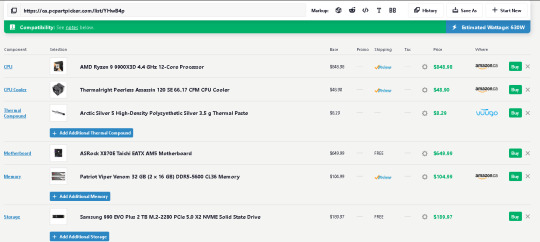
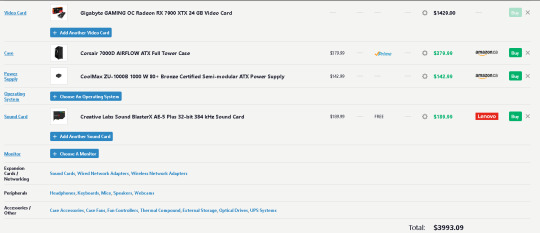
The just $6 and change short of $4,000.00 is scaring the ever-lovin' **** out of me. Oh and that's before trying to figure out the headache of which Wifi card to use in my computer in order to hook up my beast to the internet. I'm getting a headache just thinking about it.
#InZoi#InZoi Computer Specs#Computer#Researching Computer Parts#Canadian Computer Prices#Looking ahead to High-Resolution Gaming#Sims Community#non-Sims#Life Simulation Games#InZoi Community
6 notes
·
View notes
Text
The Rise of 5G and Its Impact on Mobile App Development

5G isn’t just about faster internet — it’s opening up a whole new era for Mobile App Development. With dramatically higher speeds, ultra-low latency, and the ability to connect millions of devices seamlessly, 5G is transforming how developers think about building apps. From richer experiences to smarter services, let's explore how 5G is already reshaping the mobile app landscape in 2025 and beyond.
1. Lightning-Fast Data Transfer
One of the biggest promises of 5G is incredibly fast data transfer — we're talking about speeds up to 100 times faster than 4G. For mobile apps, this means that large files, high-resolution images, and HD or even 4K video content can be downloaded or streamed instantly. Apps that once needed to compress their data heavily or restrict features due to bandwidth limits can now offer fuller, richer experiences without worrying about lag.
2. Seamless Real-Time Experiences
5G dramatically reduces latency, meaning the time between a user action and the app’s response is almost instant. This will revolutionize apps that rely on real-time communication, such as video conferencing, live-streaming platforms, and online gaming. Developers can create much more responsive apps, allowing users to interact with data, people, and services with zero noticeable delay.
3. The Growth of AR and VR Mobile Applications
Augmented Reality (AR) and Virtual Reality (VR) apps have been growing, but 5G takes them to another level. Because of the high bandwidth and low latency, developers can now build more complex, interactive, and immersive AR/VR experiences without requiring bulky hardware. Imagine trying on clothes virtually in real-time or exploring a vacation destination through your phone — 5G is making this possible within Mobile App Development.
4. Smarter IoT-Connected Apps
The Internet of Things (IoT) will thrive even more in a 5G environment. Smart home apps, connected car apps, fitness trackers, and other IoT applications will be able to sync and update faster and more reliably. Developers can now integrate complex IoT ecosystems into mobile apps with minimal worries about network congestion or instability.
5. Enhanced Mobile Cloud Computing
Thanks to 5G, mobile cloud computing becomes much more viable. Instead of relying solely on local device storage and processing, apps can now store large amounts of data and execute processes directly in the cloud without latency issues. This allows users with even mid-range smartphones to experience high-performance features without the need for powerful hardware.
6. Revolutionizing Mobile Commerce
E-commerce apps are set to benefit greatly from 5G. Instant-loading product pages, real-time customer support, virtual product previews through AR, and lightning-fast payment gateways will enhance user experience dramatically. This could lead to higher conversion rates, reduced cart abandonment, and greater user loyalty in shopping apps.
7. Opportunities for New App Categories
With the technical limitations of mobile networks reduced, a whole new range of apps becomes possible. Real-time remote surgeries, autonomous vehicles controlled via mobile apps, and highly advanced telemedicine solutions are just a few examples. The doors are open for mobile developers to innovate and create applications that were previously impossible.
8. Better Security Requirements
With 5G’s mass connectivity also comes a bigger responsibility for security. As mobile apps become more connected and complex, developers must prioritize data protection, encryption, and secure authentication methods. Building security deeply into Mobile App Development workflows will be critical to maintain user trust.
9. More Demanding User Expectations
As 5G rolls out globally, users will expect every app to be faster, smoother, and more capable. Apps that fail to leverage the benefits of 5G may seem outdated or sluggish. This shift will push developers to continually optimize their apps to take advantage of higher speeds and smarter networking capabilities.
10. Preparing for the 5G Future
Whether you’re building entertainment apps, business solutions, healthcare tools, or gaming platforms, now is the time to adapt to 5G. Developers must start thinking about how faster speeds, greater device connections, and cloud capabilities can improve their mobile applications. Partnering with experts in Mobile App Development who understand the full potential of 5G will be key to staying ahead in a rapidly evolving digital world.
3 notes
·
View notes
Text
I always want Virtual Reality to be better than it is.
VR has been around for approaching a decade at this point, and companies keep trying to make it happen. I have seen the theory that Facebook (Meta) got into the VR game because they want hardware they can control without third parties stopping their data collection, but they appear to be downplaying it now.
So can VR be good? When is it going to happen?
My first headset was the HTC Vive, and it was fun at the time, but playing it today, it's pretty dire. Depressingly low resolution, major screen door effect, big, and bulky. Annoying external trackers. It is like 10% of the way to being what I want VR to be. I still have it but can't really play it since the poor quality usually leads to a one way trip to the floor.
I have tried the Oculus Quest 2, and it is kind of on its way. It has better controllers, some actual passthrough, and the screen door effect is much less pronounced. Too bad Facebook are evil. It's like 40% of the way to what I would consider a good headset to be.
I am looking at the Apple Vision Pro, and it's kind of getting there, it is like 70% of the way to being what I want VR to be. It has crystal clear video with no screen door, passthrough that actually works for professional use, and the hand and eye tracking appears to actually work which is impressive. It isn't for gaming and has absolutely no software support for the VR software people like. It appears to occupy a different niche to the cheaper gaming headsets, aimed at "Professional" use. It shares this trait with the quest pro.
We have come a long way in the last 10 years, but it will probably be another 10 years before virtual reality is something people actually want to use. Tech companies are never ones to give up though, and they will keep painfully iterating until they get there. I think to have a chance, to be the 100% of what I want it to be VR, I think it would need, including but not limited to;
Tethered and untethered use, allowing for local apps or connecting to a PC for extra horsepower. No bullshit lockdowns on software like they have today.
Functional hand tracking AND quality VR controllers for different applications. Both of these exist today but not in the same product at the same time for some reason.
Lightweight and cool. Fanless. Won't give you a spinal injury if you wear it for more than 3 hours. Semiconductor technology is probably about there or will be there soon, but Apple isn't fanless. Sadly Apple's battery in the pocket trick might be the only way to keep the weight down. Batteries just don't really change much, sorry!
Ultra high resolution. No screen door effect. Apple are about here but it's crazy expensive, so in 10 years I am sure the price will go down. VR isn't going to happen unless you can get Vision Pro quality at the baseline, for the price of a Meta Quest.
This really reminded me of when I wanted to get a tablet PC in like 2007 but quality tablets didn't exist yet. It was all massive chonky Windows CE garbage. I knew it was coming, everyone did, but tech wasn't there. The ipad releasing several years later is what really put them in the hands of consumers.
Mass software libraries for VR won't happen until these technical challenges are overcome, and by then, who is going to care? Maybe the vision pro is Apple taking something that already exists and putting it to the mass market, as they have done so many times before, but maybe this time it isn't going to take. Maybe VR is just never going to happen, but if it does, I want to be here for it. Play Half Life Alyx if you can, and never buy a Meta product if you can avoid it.
16 notes
·
View notes
Photo
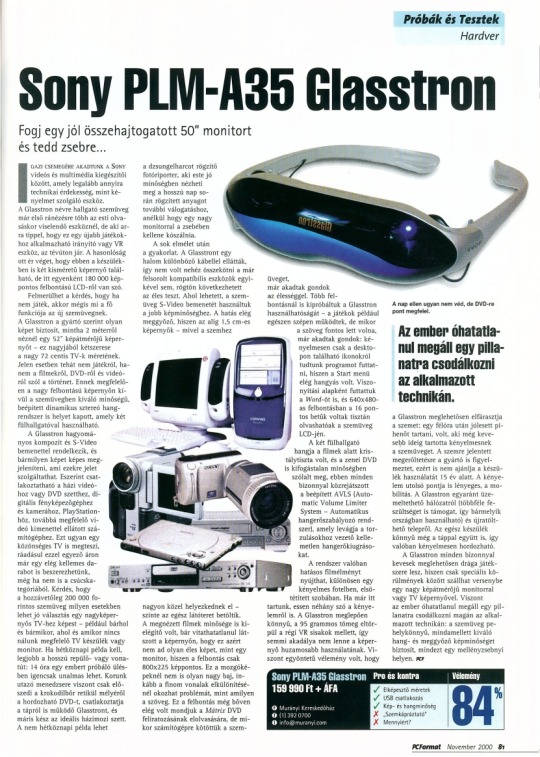
Sony PLM-A35 Glasstron on PC Format (2000-11)
Translation in English:
Take a properly folded 507 monitor
and put it in your pocket...
WE ARE LOOKING FOR A TRUE GIFT Among SONY's video and multimedia accessories, a device that is as much a technical curiosity as a convenience. The Glasstron glasses are more than just something to wear for a night's reading, but anyone who thinks they're just another gaming controller or VR device is mistaken. The similarity ends there, as this device also has two small screens, but each with a resolution of 180 000 pixels. The question may arise, if it is not a toy, then what is the main function of the new glasses. According to the manufacturer, Glasstron provides a picture as if you were watching a 52" screen from 2 meters away - this is roughly twice the size of large 72 cm TVs. In this case, the story is not about games, but about movies, DVDs and videos. Accordingly, in addition to the high-resolution screen, the glasses also feature a high-quality, built-in dynamic stereo sound system that can be used with two headphones. The Glasstron has traditional composite and S-Video inputs and can display any image that can provide a signal for them. for home video or DVD set, digital camera and camcorder, PlayStation, as well as a computer with a suitable video output. This can be done by an ordinary TV, and for the same price you can get a pretty nice piece, even if it is not from the top category. The question is whether in what cases can glasses costing approximately HUF 200,000 be a good choice compared to a large-screen TV - for example, anywhere and anytime, where and when we don't have a suitable TV set or monitor. If you need an everyday example, the best is a long plane or train journey: 14 hours in a trying session can be quite boring. The traveling manager of our time, on the other hand, just pulls out the portable DVD from the depths of the crocodile skin reticle, connects the Glasstron, which also works from the power supply, and the ideal home theater set is ready. A non-ordinary example would be a photojournalist recording a jungle fight, who can view the material recorded during a long day in good quality in the evening for further selection, without having to carry around a large monitor in his pocket.
After a lot of theory, practice. The Glasstron was supplied with a bunch of different cables, so it was not difficult to connect it to any of the already listed compatible devices, and the live test could immediately follow. Where possible, we used the S-Video input of the glasses for better image quality. The effect is quite convincing, since the barely 1.5 cm screens - since they are located very close to the eyes - fill almost the entire field of vision.
The quality of the movies I watched was also satisfactory, although it was undeniably visible on the screen that it does not provide as sharp an image as a monitor, since the resolution is only 800x225 pixels. This is not such a big problem for moving images, but it can cause problems when separating fine lines, such as text. This resolution was still more than enough to read the subtitles of the Mátrixr DVD, for example, but when we connected the glasses to a computer, there were already problems with sharpness. We tested the usability of Glasstron at several resolutions - the games, for example, worked quite well, but when the text was important, there were already problems: we could comfortably run programs only from the icons on the desktop, since the Start menu was quite noisy. We also ran Word as a basis for comparison, and the 16-point letters were clearly legible on the glasses' LCD at a resolution of 640x480.
The sound of the two earphones was crystal clear during the movies, and the music DVD also sounded in impeccable quality, the built-in AVLS (Automatic Volume Limiter System - Automatic volume control system), which cuts off unpleasant volume spikes that lead to distortions.
The system can provide a really effective film edge, ex. in a comfortable armchair, first, in a staked room. While we're at it, let's talk about comfort. Glasstron is surprisingly light, the weight of 95 grams is dwarfed by old VR helmets, so there would be no obstacle to longer use of the screen. However, there was a unanimous opinion that the Glasstron is quite tiring for the eyes: after half an hour it was nice to have a rest, some people thought it was comfortable for even less time the glasses.
The manufacturer also warns about the strain on the eyes, which is why it does not recommend using the device under the age of 15. The last point of comfort is also important, mobility. Glasstron can be operated both from the mains (it supports several voltages, so it can be used in any country) and from a rechargeable battery. The whole device is light even with the power supply, so it is really comfortable to carry.
Glasstron will certainly be a rather expensive toy for the few, as it can only compete with a large-diameter monitor or TV screen under special circumstances. However, one inevitably stops for a moment to marvel at the technology used: the glasses are feather-light, yet provide excellent sound and convincing image quality, all in a space the size of a vest pocket.
Although it does not protect against the sun, it is just right for DVD
One inevitably stops for a moment to marvel at the technique used.
Pros and cons:
√ Amazing size √ USB connection √ Picture and sound quality X dazzling X For how much?
Opinion: 84%
40 notes
·
View notes
Text

.flat. available now in select locations only
Midjourney prompt: **A beautiful woman with purple hair and tattoos wearing VR glasses, headphones around her neck, in the cyberpunk style, neon lights in the background, in the ".flat" style of illustration, resembling 2D game art, with vibrant colors, high resolution, high detail, like a digital painting, with hyper realistic details, in sharp focus, as if under studio lighting. --chaos 25 --p k4sbz7n --style raw** - Image #1
2 notes
·
View notes
Text
Virtual Desktop VR: The Future of the Virtual World
In an era dominated by technological advancements, the concept of virtual reality (VR) has transformed the way we work, learn, and interact. Among these innovations, Virtual Desktop VR is emerging as a game-changer, allowing users to experience a virtual desktop environment that enhances productivity, creativity, and even leisure. But what exactly is Virtual Desktop VR, and how will it shape the future of the virtual world? Let’s explore.
What is Virtual Desktop VR?
Virtual Desktop VR is an immersive experience that simulates a desktop computer environment within a virtual reality headset. Rather than using a traditional monitor or screen, users can access their computer’s desktop, applications, and files in a fully 3D environment. This allows for the creation of a virtual workspace that can be customized to meet individual needs, providing a sense of presence and control unlike any other.

Key Features of Virtual Desktop VR
Immersive Workspaces Virtual Desktop VR allows users to create customized virtual workspaces. Whether it’s a scenic mountain cabin, a futuristic cityscape, or an open office, the choice is yours. Users can arrange multiple virtual monitors, access documents, and use applications in 3D space, all while remaining within the virtual environment.
Multi-Tasking in a Virtual Environment Virtual Desktop VR supports multi-monitor functionality, giving users the flexibility to work across several virtual screens. This is particularly useful for professionals, designers, or programmers who often need to manage several windows or applications at once. The virtual desktop environment provides a distraction-free, limitless workspace.
Enhanced Collaboration and Interaction The ability to collaborate within a virtual world is a significant feature of Virtual Desktop VR. Whether in business meetings, design reviews, or educational settings, users can connect in a shared virtual space. Imagine brainstorming ideas on a digital whiteboard, sharing presentations, or even walking through architectural designs—all in real time.
Access to Powerful Applications From video editing to 3D modeling, Virtual Desktop VR integrates with a range of high-performance applications. This makes it ideal not only for casual users but also for professionals who require advanced software tools. VR's powerful graphics capabilities bring these applications to life, enhancing productivity and creativity.
Why is Virtual Desktop VR the Future?
Breaking the Boundaries of Physical Space Traditional desktop setups are limited by physical space, clutter, and the need for multiple monitors. With Virtual Desktop VR, users can extend their workspace infinitely and access all their tools without being constrained by their physical environment. This offers a new level of flexibility, especially for remote workers and digital nomads.
Elevating Remote Work As remote work continues to rise, Virtual Desktop VR becomes a vital tool for improving productivity. It creates the feeling of being in a real office, where you can virtually “walk” between your desk and your coworker's, participate in meetings, and even share documents instantly. This level of interaction can bring a much-needed human touch to remote communication.
Transforming Learning and Education Virtual Desktop VR isn’t just for professionals; it’s revolutionizing education as well. Students and educators can meet in virtual classrooms, access interactive learning tools, and collaborate in ways that traditional methods simply can’t match. Virtual campuses could soon become the norm, offering an immersive learning environment from anywhere in the world.
The Rise of Virtual Workspaces As VR hardware continues to improve, the dream of a fully integrated virtual office is closer than ever. With advancements in VR headsets, such as lighter designs, better resolution, and enhanced haptics, Virtual Desktop VR will become more accessible, affordable, and powerful, further embedding itself into daily life.
Benefits of Virtual Desktop VR
Enhanced Focus and Productivity: With fewer distractions and the ability to customize the environment, users often find themselves more focused and productive.
Cost Efficiency: In a virtual workspace, there’s no need for physical office space, multiple monitors, or even the heavy cost of travel for business meetings.
Sustainability: The shift to virtual environments reduces the need for travel and physical resources, making it an eco-friendly choice.
Accessibility: For individuals with disabilities or limitations that prevent them from working in traditional office settings, Virtual Desktop VR opens up new possibilities for inclusion and accessibility.
Challenges to Consider
While Virtual Desktop VR offers incredible potential, there are still challenges to overcome:
Hardware Requirements: Although VR hardware is becoming more affordable, it still requires specialized equipment that may not be available to everyone.
Learning Curve: For those unfamiliar with VR environments, there may be a learning curve as users adapt to navigating their virtual desktops.
Comfort and Motion Sickness: Some users may experience discomfort or motion sickness when using VR for extended periods, although advancements in VR hardware are constantly improving these issues.
The Future of Virtual Desktop VR
As VR technology advances, Virtual Desktop VR is poised to play a significant role in how we interact with digital worlds. Its ability to transform work, education, and social collaboration will continue to evolve, offering users new levels of immersion, flexibility, and creativity. With more businesses and educational institutions adopting VR solutions, the integration of Virtual Desktop VR into everyday life seems inevitable.
In conclusion, Virtual Desktop VR is not just a trend but a glimpse into the future of how we will experience and interact with virtual spaces. Whether for work, leisure, or education, it promises to revolutionize our relationship with technology, making the virtual world more accessible, interactive, and immersive than ever before.
#Virtual Desktop VR#mindcraaft#1950s#100 days of productivity#3d printing#35mm#60s#secret vaccation spots#70s#80s
2 notes
·
View notes
Text
The ULTIMATE Guide to Selecting the Ideal Gaming PC
Since there are so many alternatives on the market, choosing the ideal gaming PC can be a daunting endeavor. Technological developments, the growing popularity of competitive gaming, and the growing need for high-quality graphics are the main forces behind this progression. Whether you’re a casual gamer, a competitive player, or a content creator, understanding your gaming needs, budget, and the various components that make up a gaming PC is crucial. This comprehensive guide will walk you through the process of choosing the best gaming PC for your needs in 2024.
The Evolution of Gaming PCs
The 1990s: The Dawn of Gaming PCs
During the 1990s, gaming PCs began to emerge as distinct entities from regular personal computers. This era saw the introduction of dedicated graphics cards, significantly improving gaming performance. Games like Doom and Quake pushed the envelope of what was possible, driving demand for better graphics and faster processors.
The 2000s: The Rise of Custom Builds
The early 2000s marked a significant shift towards custom-built gaming PCs.This period also saw the rise of online multiplayer games, which further increased the demand for powerful hardware capable of handling complex graphics and network processing. The rise of custom builds also led to the creation of budget gaming PCs that offered solid gaming performance at lower prices.
The 2010s: VR and High-Definition Gaming
Fast developments in both hardware and software defined the 2010s. Playing video games in high definition has become the standard, with resolutions like 1080p and 4K appearing more frequently. Virtual reality (VR) also entered the mainstream, requiring even more powerful PCs to deliver smooth and immersive experiences. For serious gamers, GPUs like AMD's Radeon series and NVIDIA's GTX and RTX series became indispensable.
The 2020s and Beyond: The Era of Ray Tracing and AI
Today, gaming PCs are more powerful than ever, thanks to advancements in technologies like ray tracing and artificial intelligence (AI). Realistic lighting and shadows can be achieved with ray tracing, while AI solutions like NVIDIA's DLSS (Deep Learning Super Sampling) enhance performance without sacrificing visual quality. As we move further into the 2020s, the line between gaming PCs and professional workstations continues to blur, with high-end systems capable of handling gaming, content creation, and complex simulations with ease.
The Versatility of Gaming PCs
Multi-Tasking Powerhouses
Gaming PCs are made to manage several things at once. Whether you’re gaming, streaming, editing videos, or working on complex design projects, a gaming PC can handle it all without breaking a sweat. For professionals who need a strong machine for their work, this makes them perfect.
Future-Proofing
Investing in a gaming PC ensures that you are equipped with the latest technology, which can handle future software and game releases. Because of this future-proofing feature, you won't need to upgrade your PC frequently, which will ultimately save you money.
Understanding Your Gaming Needs
Gaming Preferences
Casual Gaming
For casual games like The Sims or Minecraft, a mid-range gaming PC is sufficient. These games don’t demand the highest specs but still benefit from good performance.
Example: The Sims 4 requires a minimum of an Intel Core 2 Duo processor, 4GB of RAM, and an NVIDIA GeForce 6600 graphics card. A mid-range gaming PC will handle these requirements easily.
Competitive Gaming
For competitive games like Fortnite or Call of Duty: Warzone, you’ll need a high-performance PC with a fast CPU and GPU to achieve higher frame rates and lower latency.
Example: Fortnite players benefit from an Intel Core i7 processor, 16GB of RAM, and an NVIDIA GeForce GTX 1060 graphics card. Reaction times and general performance can be enhanced with higher frame rates.
AAA Titles and VR Gaming
Graphically demanding games like Cyberpunk 2077 or VR gaming require top-tier gaming PCs with the latest hardware. VR gaming, in particular, demands a PC that can handle the additional load of rendering immersive environments.
What Type of PC is Best for Gaming?
The best type of gaming PC depends on your specific needs:
Graphics Card (GPU): Essential for smooth gameplay, especially in high-resolution settings. Popular options include NVIDIA’s GeForce RTX series and AMD’s Radeon RX series.
Processor (CPU): A strong CPU is crucial for both performance and multitasking. Intel Core i5/i7 or AMD Ryzen 5/7 are solid choices.
RAM: 8GB of RAM is the minimum, but 16GB is recommended for more demanding games and multitasking.
Storage: A combination of SSD for fast load times and HDD for additional storage is ideal.
Cooling: Adequate cooling is necessary to maintain performance and system longevity.
CONTINUE READING

2 notes
·
View notes
Text
MediaTek Dimensity 7300X Delivers Smooth And Fast Gaming
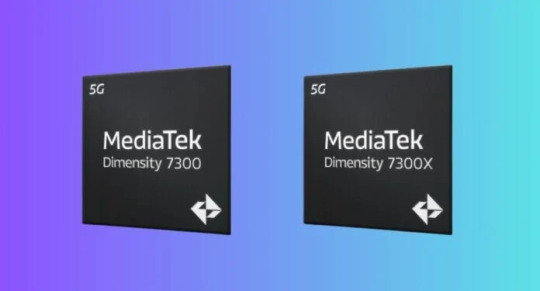
The greatest 5G smartphone processor options for high-end designs are the MediaTek Dimensity 7300 and Dimensity 7300X, which provide next-generation performance for seamless multitasking, remarkable battery life, and amazing displays. The contents of these 5G processors are as follows:
Outstanding Battery Life: Even for the most discerning smartphone users, this ultra-efficient 4nm processor provides best-in-class power efficiency to extend battery life.
Superb Image Quality: With a 200MP primary camera supported by the Imagiq 950 12-bit HDR-ISP, clear photographs are possible under any lighting circumstances thanks to precise face detection, noise reduction, and video HDR. Compared to earlier generations, it offers up to 1.3X faster live focus and 1.5X faster photo remastering. Additionally, 4K HDR video captures a 50% greater dynamic range than rival models.
Amazing Displays: The MediaTek MiraVision 955 enhances media streaming and HDR video playback while supporting WFHD+ displays with 10-bit true colour, providing smartphones with billion colour displays.
Specifically Designed for Flip Phone Designs: With dedicated support for dual displays, the MediaTek 7300X is especially made for flip phone designs.
Accelerated gaming: Up to 20% more frames per second and 20% more energy efficiency are possible with the combination of MediaTek HyperEngine, a potent octa-core CPU (which includes Arm Cortex-A78 processors), and the Arm Mali-G615 GPU compared to competing alternative platforms. Major studio support and the expanding gaming ecosystem contribute to the power and performance enhancements of VRS.
Advanced Connectivity: The processor has Bluetooth 5.4 compatibility, tri-band Wi-Fi 6E, and MediaTek Lightning Connect, which quickens Bluetooth connection times. Based on face proximity, holding posture, and device orientation, MediaTek UAC 2.0 maximises antenna performance.
Enhanced AI Computing: Supporting new mixed precision data types for better performance, power economy, and graphics, the MediaTek NPU 655 offers two times the AI work efficiency of the previous generation.
5G R16 Modem: New 3CC carrier aggregation offers better average speeds and longer reach, while cellular downlink rates have improved to 3.27Gb/s. In typical 5G usage settings, MediaTek 5G UltraSave 3.0+ offers 13–30% more power efficiency than competing options.
Smartphones with Dual VoNR: Premium audio and video call quality is provided by dual 5G SIM phones with dual VoNR.
MediaTek Dimensity 7300X
Superior Power Efficiency
With its next-generation capabilities and best-in-class power efficiency, this ultra-efficient 4nm-class CPU promises seamless multitasking, transcendent captures, superior performance, and improved AI-enhanced computing.
Superior Visual Clarity
For outstanding photography, the MediaTek Imagiq 950 offers a top-tier 12-bit HDR-ISP that supports a 200MP primary camera. When coupled with new hardware engines that offer video HDR, face detection (HWFD), and accurate noise reduction (MCNR), the image quality of captures is guaranteed to surpass experiences with clarity and crispness in any lighting scenario. Compared to previous generation Dimensity, live focus photo performance is up to 1.3X faster and photo remastering is up to 1.5X faster. Capture 4K HDR video with a dynamic range that is more than 50% broader than competing platforms’ offerings, adding more clarity to videos to produce amazing effects while using less power.
Specialised Assistance for Flip Phones with Dual Displays
Flip phones with two displays can now be supported by MediaTek MiraVision 955, with the primary display offering remarkably detailed WFHD+ resolution and 10-bit true colour. A multitude of international HDR standards enhance media streaming and playback, guaranteeing top-notch cinematic experiences while on the road.
Quick Gaming
Together, the 4X high frequency big-core processors in the octa-core CPU, the most recent Arm Mali-G615 GPU, and MediaTek HyperEngine optimisations enable the Dimensity 7300X to accelerate gaming with up to 20% more frames per second and improve energy efficiency by up to 20% when compared to competitor options.
Major studio support and the expanding gaming ecosystem contribute to the power and performance enhancements of VRS. Optimised 5G and Wi-Fi game connections, intelligent resource optimisation, Bluetooth LE Audio technology with Dual-Link True Wireless Stereo Audio, and more are some of the other improvements to the entire smartphone experience.
Bluetooth 5.4, Wi-Fi 6E, and Special Connectivity Features
The most recent version of the Bluetooth standard and tri-band Wi-Fi 6E, which offers incredibly dependable and quick multi-gigabit wireless connectivity, are examples of wireless connectivity.
While MediaTek Wi-Fi/Bluetooth hybrid coexistence technologies ensure that Wi-Fi and earphones, or peripherals like gamepads, work together flawlessly without compromising latency and networking speeds, MediaTek Lightning Connect twice the speed at which Bluetooth connections can be made, enabling quicker than ever device connections.
Depending on the direction of the device, the proximity of the hand or face to the device, and even the fold status of flip phones, MediaTek UAC 2.0 optimises antenna performance for wireless connectivity.
Improved Artificial Intelligence
The MediaTek NPU 655, which offers two times the performance of the previous generation, improves AI task efficiency and supports new mixed precision data types. This opens up new possibilities for device manufacturers to offer users improved performance, better visuals, better power efficiency, and new experiences.
3CC-CA Compatible 5G R16 Modem
Faster 5G with Greater Range
By using 3CC carrier aggregation to address a maximum of 140MHz cellular spectrum, 5G downlink speeds of up to 3.27Gb/s can be achieved, offering better downlink speeds in urban and suburban areas. With the application of mixed duplex FDD+TDD, which combines the benefits of low and mid-band, smartphones in CA can enjoy higher speeds and a wider range. Additionally, carrier aggregation allows for a smooth changeover between two 5G connection areas at the coverage layer, giving consumers more than 30% more throughput layer coverage than they would have without CA.
5G UltraSave 3.0+ MediaTek
In typical 5G sub-6GHz connectivity circumstances, MediaTek 5G UltraSave 3.0+ offers a full range of R16 power saving advancements in addition to MediaTek’s own optimisations that yield 13–30% higher power efficiency than competing options.
Two 5G SIMs
Customers have more options and superior voice and video call quality with dual 5G SIM and dual VoNR.
Mediatek Dimensity 7300X Specs
Processor
CPU
4x Arm Cortex-A78 up to 2.5GHz
4x Arm Cortex-A55
Cores
Octa (8)
Memory and Storage
Memory Type
LPDDR4x
LPDDR5
Max Memory Frequency
Up to 6400Mbps
Storage Type
UFS 3.1
Connectivity
Cellular Technologies
2G-5G Multi-Mode, 5G/4G CA, 5G/4G FDD / TDD, CDMA2000 1x/EVDO Rev. A (SRLTE), EDGE, GSM, TD-SCDMA, WDCDMA
Specific Functions
SA & NSA modes; SA Option2, NSA Option3 / 3a / 3x, NR TDD and FDD bands, DSS, NR DL 3CC 140MHz bandwidth, 4×4 MIMO, 256QAM NR UL 2CC, R16 UL Enhancement, 2×2 MIMO, 256QAM VoNR / EPS fallback
Peak Downlink Speed
3.27Gbps
GNSS
GPS
BeiDou
Glonass
Galileo
QZSS
NavIC
Wi-Fi
Wi-Fi 6E (a/b/g/n/ac/ax)
Wi-Fi Antenna
2T2R
Bluetooth
5.4
Camera
Max Camera Sensor
200MP
Max Video Capture Resolution
4K30 (3840 x 2160)
Camera Features
Hardware Face Detection
Hardware MCNR
4K Video HDR
AI-3A with AE, AWB, AF
Video EIS
Dual simultaneous video capture
All-pixel AF
Graphics
GPU Type
Arm Mali-G615 MC2
Video Encoding
H.264
HEVC
Video Playback
H.264
HEVC
VP-9
Display
Max Refresh Rate
WFHD+ @ 120Hz
Full HD+ @ 144Hz
AI
MediaTek 6th generation NPU
NPU 655
Read more on govindhtech.com
#smartphone#mediatekdimensity7300#mediatek#wifi6e#cpu#Bluetooth5.4#artificialintelligence#gpu#news#technews#technology#technologynews#technologytrends#govindhtech
4 notes
·
View notes
Text
I think the thing that fascinates me about the Y2K aesthetic; is that as someone who lived through the very short lived era, it wasn't/isn't just an aesthetic.
I mean that in the sense that for a few years it really did exist; we had this kind of weird "futuristic" looking tech, blobjects were a very real thing; and I think this is why we see so many people who grew up in the early 2000's sort of yearning for that aesthetic.
Because it's not just that it's nostalgic; it's not just that it's a cool aesthetic, or that there's plenty to enjoy about it as an aesthetic. It's more specifically that it's all of that, and it was real; it was tangible. We had it, and we lost it; but not entirely. There's tons of old blobjects still operational; you can go buy blobjects to this day, and because they're mainly just shells you can still fit modern hardware in them and make fully functional Y2K aesthetics in your daily life.
Much of the gaming market at the time still persists to this day with some of the most popular MMOs and even console games being continued still whether in it's original state, or through sequels.
The thing about the Y2K "aesthetic" is that for a lot of people who lived through it, it's not just an aesthetic; it's a real, obtainable thing; and it hasn't fully died out yet. So those who want to live in the world that the Y2K aesthetic promised us; technically can. Especially because we've hit a point now where technology has advanced to what was being promised to us back then; at least to some extent.
Things like VR, AR, and honestly just computer hardware integrated into our everyday lives means these days we're not just living the aesthetic, we're not just engaging with things that look like future tech; we're genuinely able to experience the things that were mainly just sci-fi back in the day.
As someone who grew up with blobjects and early 3D models where a character had maybe a total of 50-100 polygons (and those were considered high poly counts) and the textures were still pixelated at that; it's remarkable to me to be able to still not only engage with those same games and tech, but to do so in entirely new ways like AR/VR or on hardware that, should I desire it; can actually give those characters thousands if not hundreds of thousands of polygons and textures with resolutions big enough that you can't see even groups of pixels without throwing them in some kind of editing software and zooming in on 4000x4000+ canvas sized textures.
I understand that the early 2000's were like, 20 years ago; and in the terms of human life that IS actually a good while ago. However I think people forget at the same time that if you look at the course of the internet and tech; the growth we've had, the changes being made; the internet itself, and tech itself; is just kind of a blip on the time scale, you know? This shit hasn't been around for too long, it's still new and exciting for the people who were born alongside it; and for a lot of us the Y2K era was around the time of our young teenage and early adult years; so we remember a lot about it fondly; only to have it sort of ripped away from us by capitalism when people moved to sleek, emotionless black white and grey cubes and sharp edges and minimalism.
For a lot of us, we don't care to make the switch when we don't need to. We can still use our modern hardware with our old fashioned tech that oozes personality; and personally I intend to do so for as long as I can.
3 notes
·
View notes
Text
Top 10 Scale Gifts for the Gadget Enthusiast
Finding the ideal present for the gadget lover in your life may be thrilling and difficult at the same time because technology is continuously changing, and gadgets are becoming an essential part of our lives. The appropriate gadget may make their world come alive, whether it's for a birthday, an anniversary, or to express gratitude. We've put together a list of Top 10 Scale Gifts for the Gadget Enthusiast to aid you in your search for the perfect present.

High-end headphones
There's nothing quite like immersing yourself in music or podcasts with a pair of high-quality headphones. For the audiophile in your life, consider options like the Bose QuietComfort 35 II or Sony WH-1000XM4. These headphones not only offer exceptional sound quality but also come with noise-canceling features, making them perfect for music lovers on the go.
Smartwatch or Fitness Tracker
Smartwatches and fitness trackers have become more than just timekeeping devices; they're personal assistants for tracking health and staying connected. Due to their abundance of health and fitness capabilities, app compatibility, and stylish designs, the Apple Watch Series 7 and Fitbit Versa 3 are both fantastic options.
Drone
Drones have taken the world by storm, offering a unique perspective and endless possibilities for creativity. DJI's Mavic Air 2 and Skydio 2 are top-notch options, equipped with high-resolution cameras, obstacle avoidance, and impressive flight capabilities. A drone is an excellent gift for both tech enthusiasts and photography lovers.
Virtual Reality (VR) Headset
Step into another world with a VR headset. Oculus Quest 2 and Valve Index provide immersive gaming experiences and access to virtual reality applications. VR headsets are perfect for those who crave a new level of entertainment and want to explore virtual realms.
High-Performance Laptop
A powerful laptop is essential for the tech enthusiast who wants power on the run. Choose laptops are notorious for their exceptional speed, stunning defenses, and portability, similar as the MacBook Pro or Dell XPS 15. These laptops work well for a variety of operations, including videotape editing and programming.
Smart Home Devices
Transforming a house into a smart home is a trend that continues to gain momentum. Smart home devices like Amazon Echo, Google Nest, and Philips Hue lights offer convenience and automation. They allow control over lights, music, security, and more with just a voice command or a tap on your smartphone.
Streaming Device
Cutting the cord has never been more accessible with streaming devices like Roku Ultra and Apple TV 4K. These devices offer access to a vast library of streaming services, including Netflix, Disney+, and Hulu, in stunning 4K quality. Streaming devices are perfect for binge-watchers and movie buffs.
High-Resolution Camera
Capture life's moments in stunning detail with a high-resolution camera. The Sony Alpha a7R IV and Canon EOS R5 are recognized for their superb image quality and adaptability. For photographers who want to capture landscapes, portraiture, or wildlife, these cameras are perfect.
Gaming Console or Accessories
Gaming is a passion for many gadget enthusiasts. Consider the latest gaming consoles like the PlayStation 5 or Xbox Series X. Enhance the gaming experience with accessories like gaming chairs, mechanical keyboards, or gaming headsets.
Tech Toolkit or DIY Electronics Kit
For those who love to tinker and build, a tech toolkit or DIY electronics kit is the perfect gift. Arduino Starter Kits and Raspberry Pi Bundles provide endless opportunities for creating gadgets, robots, and electronic projects.
Conclusion
In conclusion, it need not be difficult to select the ideal present for a gadget fanatic. With the top 10 scale gifts we've outlined, you can surprise your loved one with a thoughtful and exciting present that aligns with their passion for technology. Remember, the best gift is one that shows you know their interests and cater to their tech-savvy side.
2 notes
·
View notes
Text
i agree but you should not expect ray tracing to run on an igpu and 2gb ram
like id say at the bare minimum a game or program should run at lowest settings on that laptop, expecting the highest settings for any program made to run on something like that is incredibly unrealistic
id say personally the benchmark should be a 10-15 year old dual core processor, an igpu/low end gpu, 4gb ram (the only device i have with less than that is my wiiu, ive never seen any computer recently with less than that), and 64gb or less free space (being really generous with the storage space, id rather say 32gb), and the game/program should run at 30fps+. id say with no active cooling either, but fuck that i think we should bring back active cooling on laptops (basically means putting fans in there again). at that point the only games that shouldnt be expected to work would be things like vr titles (because you NEED high resolution and refresh rate otherwise its nauseating)
My solution for bloatware is this: by law you should hire in every programming team someone who is Like, A Guy who has a crappy laptop with 4GB and an integrated graphics card, no scratch that, 2 GB of RAM, and a rural internet connection. And every time someone in your team proposes to add shit like NPCs with visible pores or ray tracing or all the bloatware that Windows, Adobe, etc. are doing now, they have to come back and try your project in the Guy's laptop and answer to him. He is allowed to insult you and humilliate you if it doesn't work in his laptop, and you should by law apologize and optimize it for him. If you try to put any kind of DRM or permanent internet connection, he is legally allowed to shoot you.
With about 5 or 10 years of that, we will fix the world.
70K notes
·
View notes
Text
0 notes
Text
0 notes